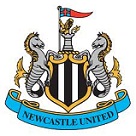DEB
Posts: 687
Joined: 1/29/2005
From: Bristol , England
Status: offline

|
quote:
ORIGINAL: mdiehl
The P-70 was a p.o.s. The J1N was another p.o.s. The P-70 was the first of the two with airborne radar. It did not require searchlight assistance from the ground. It carried its own light. Considering that it was bascally an A-20 with some cannons, its failure is no great surprise. The only really good night fighters of the war were purpose built as such, not pathetic conversions (in the P-70s case from a decent ground attack bomber, in the J1N's case from a decent photorecce/trainer).
The Japs used a small plane mounted searchlight too ( sometimes ). See below:-
( From :- http://www.aviastar.org/air/japan/nakajima_j1n.php )
"This version, the J1N1-S, entered production in August 1943 and continued until December 1944, during which period a total of 420 J1Ns were produced, the great majority of them J1N1-S night-fighters. These differed from the earlier reconnaissance version in having the crew reduced from three to two, the observer's cockpit being eliminated and faired over; all aircraft retained the upward-firing cannon, but the downward firing guns (found difficult to aim and seldom used) were omitted from later aircraft, while a third upper gun and a forward-firing 20mm cannon was fitted in the J1N1-Sa. Rudimentary centimetric AI radar was installed in the nose and some aircraft also carried a small nose searchlight."
This information ( and specifically the last sentence ) is confirmed by Japanese Aircraft of WW2 by R.J. Francillon ( of which I have a copy ).
From:- http://www.usaaf.net/ww2/night/nightpg5.htm
"Since the British had been converting Douglas Boston attack bombers to night fighters since 1940, it seemed logical to fill the gap left by the “Night Interceptor Pursuit Airplane” project with the night version of the Boston, known as the Havoc. The RAF had also fitted some Havocs with a powerful searchlight to illuminate enemy aircraft and allow accompanying Hurricane day fighters to attack. Renamed the Turbinlite, these aircraft proved ineffective because the searchlight blinded everyone in the area, friend and foe alike."
This says the searchlight was added to RAF "P-70"aircraft.There is no such comment on the US P-70's information ( as shown on a previous post - same source, different page ).
quote:
No one would construe the J1N1-s as remotely comparable to late war radar guided Allied night fighters. They weren't. They stank.
From :- http://www.usaaf.net/ww2/night/nightpg12.htm ( and other pages )
The 16 WW2 US NF squadrons are credited with 158 kills. 70 of these were by the 10 squadrons serving in the Pacific ( 44% of kills with 62.5% of Squadrons ).
This breaks down as follows ( Pacific ) :-
P-70 : 2 , P-38 : 1 ( trial by 6th NFS ), P-61 : 67.
The 10 Pacific squadrons served a total of 148 months during WW2. This equates to 0.473 kills per month each on average. This also equates to 0.047 of a kill per squadron per month.
The P-61's had 2 aces @ 5 each.
From :- http://www.acesofww2.com/japan/Japan.htm
Shows 45 Japanese night fighter kills by Aces alone ( although this should be t/a 39 as two were Pilot & Navigator/Observer in the same aircraft ), these were between approx. 12 squadrons ( source :- Japanese Aircraft of WW2 by R.J. Francillon ) using the Irving ( 6 ) & Nick ( 6 ) night fighters. This equates to 3.55 kills per squadron each on average ( P-61: 6.7 ). A split by type of aircraft is unknown / unavailable, as is the months of service per Japanese Squadron.
Many of these kills were against B-24's & B-29's. Aces listed is 6 ( discounting the know navigator/observer combination).
I guestimate however that the Nick was in service for some 80 months in total, and the Irving 100 months, ( source :- production figures from Japanese Aircraft of WW2 by R.J. Francillon ).
This would equate to 0.22 kills per month on average ( P-61: 0.473 ) and 0.018 kills per month per squadron ( P-61 : 0.047 ).
It is not known however, how many other kills were made by other pilots, as squadron information cannot be traced. ( Such information would decrease the difference between the two aircraft. ) Indeed any information here is very difficult to trace:-
From :- http://usfighter.tripod.com/hiroyoshi_nishizawa2.htm
"The Japanese did not encourage the tallying of individual scores, being more inclined toward honoring a team effort by units. As with the French and Italians, Japanese victories were officially counted for the air group, not for individuals. Generally, attempts to verify personal claims by Japanese airmen can only be conducted from postwar examinations of their letters and diaries, or those of their comrades."
The above shows that the P-61 was a maximum of approx. 2 times more efficient than the Irving / Nick ( proberly due to it's radar advantage ).
It also shows your " They stank" is an exaggeration ( as usual ).
The P-70 was however, approx. a minimum of 5 times worse ( despite it's radar "advantage"). Now that does stink ( to use your phrase ).
Note however, that in UV, P-61's are not available at commencement, or as replacements/reinforcements ( unless you "employ" the game editor ).
|
 Printable Version
Printable Version








 And that it was done is more than sufficient documented...
And that it was done is more than sufficient documented... 









 New Messages
New Messages No New Messages
No New Messages Hot Topic w/ New Messages
Hot Topic w/ New Messages Hot Topic w/o New Messages
Hot Topic w/o New Messages Locked w/ New Messages
Locked w/ New Messages Locked w/o New Messages
Locked w/o New Messages Post New Thread
Post New Thread